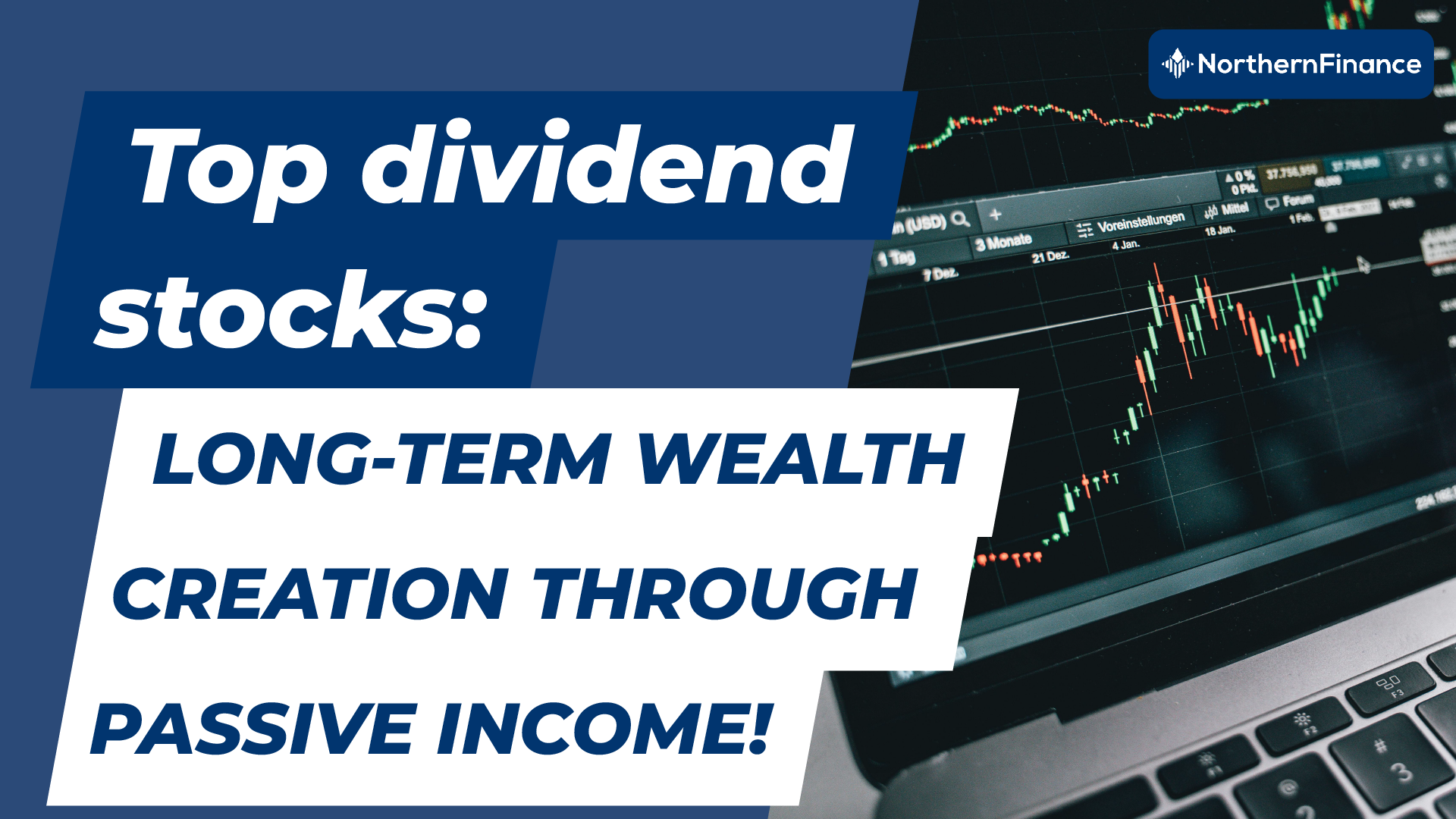Top dividend stocks – build wealth through passive income


Current high inflation rates mean that prices are continuing to rise and consumers can afford fewer products and services for the same amount of money. You may also be looking for a way to protect your assets from inflation and are considering securities. In this article, you will learn which top dividend stocks could be suitable for building passive income and combating inflation.
In brief:
- Companies can distribute part of their profits to their investors.
- With a specific strategy, you can build up passive assets to provide for your retirement or financially secure your family.
- These top dividend stocks can help you build a portfolio and benefit from regular distributions.
You may have asked yourself the question ‘What should I invest in?’ and come across the topic of passive income. To help you better understand this strategy, the following section provides an overview of stocks, profit distributions and how they can be used to build passive income.

What are shares?
Shareholders are co-owners of a company when they have purchased a security. They have a financial stake and receive a security in return for their capital investment. Upon receiving this security, the investor acquires certain rights.
One example of this is participating in annual general meetings. These are held to make important decisions about the company. The people who have the most influence at these meetings are major shareholders, who own double-digit percentages of the shares in the public limited company. Small shareholders can also vote, but they mainly use the securities to invest their assets.
You can earn money with stocks with the aim of profiting from the company’s performance. Investors look for undervalued companies and want to profit from a future sale at a higher price. Another way to generate returns through this form of investment is through dividends.
When a corporation makes a profit, it has the option of distributing it to small and large shareholders. These are dividend payments to the shareholders. The aforementioned annual general meetings decide whether distributions are to be paid out and, if so, how much.
- Part of the company’s profits are paid out to shareholders, while another part is not.
- Parts can be incorporated into projects of the respective company or reinvested.
- Another option is to save parts in order to build up financial reserves.
- Distributions are not mandatory for companies, but voluntary payments.
- Investors receive a fixed amount per security they own.
What is a dividend strategy?
The fundamental objective of this strategy is to generate regular returns through the highest possible dividends. This enables you to build up passive income: the idea is that your money generates itself without you, the investor, having to do much.
Building up passive income through distributions has the following advantages for you as an investor:
- Leisure time: The higher your passive income, the more leisure time you have. While you may have previously worked 8 hours a day, with a higher passive income, you can switch to 6 hours a day. You gain additional time that you can invest in other goals, such as projects, interests or your own family.
- Independence: These securities are among the high-yield investments. An additional passive income stream goes hand in hand with greater freedom. This includes, for example, geographical freedom or a reduction in weekly working hours. It also makes it easier to switch to a different job or become self-employed.
- Security: Passive income can help you build long-term wealth. You can use this to provide for your family or take care of your retirement, for example.
Good to know:
Investors who use the dividend strategy to invest their money look for companies that are known for paying relatively high dividends on a regular basis. This means that less emphasis is placed on performance and more on the stability of the dividends.

Key figures for dividend investors
Dividend yields are a particularly important key figure. They are calculated as follows: Dividend yield = (distribution / current price) x 100. The figure indicates what percentage of the company’s current price is distributed to shareholders and helps to compare securities with one another.
Cash flow is the term used to describe when a company’s expenses and income are compared. The term helps to assess the liquidity of corporations.
The payout ratio of a company is important for investors. It indicates the proportion of profits that a company pays out to its shareholders in the form of dividends. This key figure can provide an indication of the level of future payouts. For example, very high payouts suggest that future payouts will be reduced.
Dividend growth describes how the amount of a distribution differs from the previous distribution. This is easy to calculate: subtract the old value of the distribution from the new figure to track the current development.
The price-earnings ratio, or P/E ratio for short, is used to identify whether companies are overvalued or undervalued. It compares a company’s earnings with the current price of its shares.
Companies that have increased their dividend payments for at least 50 consecutive years are referred to as dividend kings. A particular advantage of such companies is the stability they offer investors who want to work with this strategy and build up a passive income.

Regular distributions from these top dividend stocks
Basically, there are no companies that are suitable for every single investor. Your investments should match your financial goals and your situation. It is important to research the companies you are interested in thoroughly in advance.
The key figures presented in the previous chapter provide important information and can show you whether a group is suitable for your strategy or not.
The fundamental risks of this asset class must also be taken into account. For example, these types of securities are subject to price fluctuations. You may be wondering, ‘Is it better to invest in stocks or ETFs?’ There are dividend ETFs that focus on companies with higher payouts but are better able to offset sharp fluctuations, for example.
A concrete example of a company that has been reliable in paying dividends is Allianz, the second-largest insurance provider worldwide. In recent years, there have been many increases in payouts. Only in the crisis year 2020 were payouts to investors not increased due to the coronavirus pandemic, but kept constant. The company’s plans to date indicate that investors will continue to benefit from high dividends in the future.
Another example of a German corporation is BMW. The company focuses on the production of cars and motorcycles. BMW has consistently increased its dividends in recent years, which could be of particular interest to investors who focus on high payouts.

Depending on the strategy you choose as an investor, you can focus on companies that are not currently paying high dividends but offer high potential.
Good to know
Regardless of the strategy, it is important that you take plenty of time to conduct detailed research in order to gain a better understanding of the companies and key figures that are of interest to you.

Conclusion: Passive income through regular dividend yields
Investing in this form of financial investment offers you the opportunity to become a co-owner of a corporation and benefit from returns and additional rights such as voting rights at meetings. Dividends paid by companies are particularly suitable for building up long-term wealth through passive income.
When developing your strategy, it is particularly important to look for companies that offer stability: this means that they offer regular dividends and increase them consistently. Some top dividend stocks are known for their high dividends, but the securities should still suit you and your financial situation. Find out more about ‘the best risk-free investment’ or ‘how to get started with stocks’ here!


